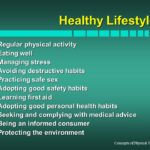Battling for your goals
|
||
 |
||
|
|||||
|
|||
 |
|||
|
|||
|
|||
 |
||
Body development for athlete
|
||
 |
||
|
|||||
 |
||
|
|||||
 |
||
|
|||||
 |
||
Basics of Eating Before, During and After a Workout
The Basics of Eating Before, During and After a Workout
When it comes to performance, timing matters. Consuming the right fuel at the right time is a crucial part of performing your best as an athlete or active individual. Without proper fueling strategies, athletes are at risk for poor performance, injury, nutritional deficiency and extreme fatigue.
Figuring out what works best for you takes trial and error. While it’s recommended that athletes work with a sports dietitian to fine-tune what is best for their sport and individual body, there are fundamental guidelines everyone can follow.
Eating before a workout is critical because it supplies your body with energy, prevents dehydration, delays or prevents fatigue and even enhances mental focus. Optimally, you should consume a meal 3–4 hours prior to training. Of course, this isn’t always possible.
The longer you have between eating and training, the larger and more complex your meal can be — as there is more time for digestion. This meal should be higher in easy-to-digest carbohydrates so as to not stress the GI system while also providing easy-to-use energy. This meal should also contain small amounts of protein and fat to provide satiety. However, you should avoid fibrous foods to lessen the risk of having an upset stomach while training. Too much fiber, fat and protein delay the rate at which carbohydrates can be digested and utilized for energy, which is not great when you need energy to perform.
Then, just before training or racing, top off your energy stores with a quick-burning carbohydrate snack like a banana, sports drink or sports gel. To prevent dehydration while training, sip water (in some cases a sports beverage) frequently prior to starting your workout session.
What to consume while working out largely depends on how long and how intense your training is. Carbohydrates are the macronutrient used most for fast energy and should be consumed almost exclusively during workouts. Fats and protein can aid in satiety, recovery and mental focus during endurance training.
For short sessions lasting less than 90 minutes, it may not be necessary to take in additional fuel. To get a slight edge for shorter, more intense workouts, try adding a small bit of sports drink, sports drink rinse or gel to top off energy supplies. For longer workouts more than 90 minutes, aim to consume 30–90 grams of carbohydrates per hour. This large range of carbohydrate intake depends on your gut tolerance and type of training.
How to build a digitally savvy workforce in E&C
Why the need for digital talent?
Technology has moved beyond simply changing processes and how things are managed.
Digital transformation has spearheaded roles that never existed before in E&C, including: the BIM Manager, GM of Innovation, and Digital Delivery Officer. Technology will continue to be critical in the next wave of growth in the industry.
Employees in the industry will need to be upskilled to help manage and implement digital transformation, and organizations must attract talent eager to harness the power of technology.
How technology drives productivity
Organizations rely on a competitive edge in an industry driven by productivity gains. Margins continue to dwindle, the industry is becoming more fragmented, and there’s a challenge to recruit talent and a skilled workforce.
These obstacles, amongst others, are impacting the rate of productivity and efficiency.
Technology helps empower productivity gains by creating a better flow of information across the supply chain, improved efficiency through standardization, reduced costs, and efficient project delivery.
Should everyone be trained to be an expert?
The simple answer is, no—not everyone needs to be at the same level of competency.
The degree of training and digital savviness will depend on the role type, function, and level of interaction with technology. The workforce can be segmented between highly skilled experts with specialized skills and those who simply need to be aware that the systems or standards exist.
Investing in a phased certification program—ideally provided by the vendor—will help upskill the workforce based on their competency requirements.
Establishing digital talent within an organization
The biggest perceived technology challenge is a lack of qualified employees, according to recent BCG research.
So, how do you encourage and grow digital talent?
Organizations must invest and nurture the existing workforce’s skill set and eagerness to innovate, while recruiters need to evaluate tech savviness in their hiring criterion.
For example, Bechtel created a program called the Future Fund to encourage their employees to innovate and promote emerging trends and technology. The Future Fund provides an opportunity for the workforce to unleash ideas that will help increase productivity and reduce costs across projects. Read the full case study here.
The bottom line: digital transformation is a culture shift that will impact the entire organization. Digital transformation is migrating from the traditional ways of working and will require the support and commitment from everyone, ranging from C-level staff to new hires.
6 steps to huge project success
1. Leadership
Sean McQue
Traditional engineering and construction (E&C) projects typically have one individual directing the entire project team. Megaprojects are completed by joint ventures, consortiums, and other alternative delivery models given their sheer size and complexity.
McQue says, “Leaders must motivate people to follow them; you can manipulate or inspire. To succeed, you must inspire” Successful megaproject leaders rely on the following tenants: open, collaborative, innovative, flexible, forward looking.
2. Project environment
The leadership team selects which organizations participate on a megaproject, the contract style and language, implementation, and the systems used to manage data, communication, and processes. A successful project team must be: cooperative, non-confrontational, interactive, experienced, efficient, and motivated.
3. Project plan
According to McQue, the project plan must be “attainable, measurable, and adaptable”, because the plan greatly impacts the team environment and project delivery. A collaborative leadership team sets the baseline and agrees on goals, success metrics, and how project responsibilities are divided. A successful megaproject plan must be agreed by all appropriate parties.
4. People
Nothing is possible without a talented team to develop and support the project environment and plan. The right people have collaborative mindsets, the discipline to measure progress against milestones, and the motivation and skills to reach project goals. “If you have the right people, the rest will fall into place,” McQue says. Skilled team members instill: accountability, collaboration, integrity, skill, and decisiveness.
5. Information management
Implementing information management guidelines are crucial given the sheer size, pace, and numerous components to megaprojects. Mismanaged information can gravely impact cost and schedules resulting in time intensive errors, rework, and disputes.
“If vast amounts of project information aren’t managed correctly, people can drown in information and be starved for knowledge,” McQue shares. Information on megaprojects must be: accurate, accessible by the right people at the right time, complete, and consistent—even more so than on traditional projects.
6. Delivery
The end goal is—of course—ensuring a successful project delivery. McQue states, “A key to project success is for all team members to have ‘a project first’ mindset. A project cannot succeed unless all parties are successful. If all parties are successful, the project will succeed.”
Rise above the failure rate
We hear about megaprojects every day—whether they’re airports, power plants, or highways.
According to the Oxford Handbook of Megaproject Management, “[M]egaprojects are large-scale, complex ventures that typically cost $1 billion or more, take several years to develop and build, involve multiple public and private stakeholders, are transformational, and impact millions of people.”
These mighty projects are the essential backbone to our infrastructure, but unfortunately, have very high failure rates.
Many project owners are attempting to apply traditional tools and processes to megaprojects with little success. New contractual relationships and models must be developed—and new team structures put into place—to address the size, complexity, and risks associated with megaprojects.
Megaproject experts share their knowledge
We spoke with several industry experts about how megaprojects are unique in addition to how to avoid common risky pitfalls on the path to success. Bob Prieto, veteran executive of Fluor and Parsons Brinckerhoff, and author of “The Giga Factor: PM in the Engineering & Construction Industry”, and Hans Hoppe, Principle Program Controls Manager with Parsons, share the following:
Megaprojects have completely unique project requirements
Bob Prieto
Prieto says, “It’s not about perfecting an imperfect model, it’s about creating a new one.”
For example, by 2030, the new 743,000 square meter Mexico City Airport will serve 68 million passengers. 82 organizations are working on this massive, extremely complex megaproject which includes numerous systems, security, safety, and regulatory requirements.
Owner and project readiness are essential
Hans Hoppe
Hans Hoppe shares, “How these projects begin makes a huge difference to how they end.”
Projects can quickly start off on the wrong foot—and sometimes never recover—if the substantial scope isn’t defined and the right team members aren’t in place from the beginning.
Lack of project readiness
Many projects start prematurely before the scope is properly defined, the designs well developed, and the essential team members on board. According to Prieto, currently two-thirds of all megaprojects fail due to schedule or budget overruns. Starting a project earlier can appear to save time, but premature launches can result in miscommunication, errors, and a divided, uncooperative project team.
Uncollaborative leadership
Leadership sets the tone for the teams they build. Projects will struggle if project leaders don’t instill a collaborative structure and mindset—a key ingredient to megaproject success. Hoppe says, “The leadership team must strive to deliver one successful integrated project.”
Clear contract terms and language
Clear contract structures and terminology are crucial to a project’s success for all parties involved. “There are enough challenges on megaprojects without introducing adversarial relationships,” Hoppe warns.
Stronger stance needed on EU palm oil boycott
The European Union’s (EU) recent decision to curb palm oil imports from Asian countries will have far-reaching economic consequences for Malaysia, one of the world’s biggest producers and exporters of the commodity.
In response, our government is writing to the EU and planning to present petitions to the various European governments. It is also said to be in talks with the EU to mitigate the impact of this vote.
While all this is necessary, it seems like too little too late to reverse what looks like a major setback for the plantation industry. Could more have been done to prevent this momentous vote, or at least soften the blow?
The EU’s move didn’t just emerge overnight but has been brewing over the past few years. Has our government and the various agencies representing our palm oil interests been aggressive enough to fight our cause with the EU? It does not seem like it.
This month, the European Parliament voted for the resolution to phase out palm-based biofuels from the EU energy mix after 2020. The final decision will be made in a tripartite meeting along with the EU Council and the European Commission.
Prior to this, smallholders in Malaysia gathered to protest the vote that could jeopardise their livelihood. However, such protests are unlikely to hold much sway with the power brokers in the EU.
The facts speak for themselves. Europe has become Malaysia’s second-largest export market for palm oil, importing 2.06 million tonnes last year, overtaking China. Some 600,000 tonnes of its palm oil imports are used as feedstock for biodiesel.
The proposed EU boycott of palm oil from Malaysia, Indonesia and Thailand is purportedly done due to environmental considerations but clearly smacks of trade protectionism.
This could be a major turning point in trade relations with our European counterparts and the government should adopt a harder, more forceful stance to underline the importance of palm oil in our economy.
It is time we adopt a more strategic approach to protect the growth of our plantation industry in international markets, instead of just reacting with belated petitions.
Kuala Selangor, the world is watching
An enforcement officer from the Kuala Selangor district council in Selangor was caught on camera flipping over a tray full of fish at a wet market recently. This happened during a routine check to ensure market vendors do not obstruct the walkways. This sort of bullying and misuse of power by enforcement officials should not be condoned.
Though the vendors may have infringed the regulations, enforcement officials should act professionally at all times. The incident occurred in a small, sleepy community but it has become a talking point nationwide as a video clip of the incident has gone viral.
Given the wide reach of social media, potential foreign investors may generalise this as the normal way of life here rather than a one-off action by an errant enforcement officer.
The manner in which the officer will be dealt with will be closely monitored by the business community and the public.
The district council’s acting president Mohamad Yusli Askandar has reportedly claimed the incident is “just a misunderstanding” and the officer concerned is not a repeat offender.
So it is looking increasingly likely the officer will be given a mere slap on the wrist. If this is the case, the local authority will be seen as endorsing a high-handed “gangsterism style” of enforcement.
Over the years, the authorities have often acted against problematic civil servants by simply transferring them to other offices. For example, a primary school teacher, who allegedly molested nine students at a school, was transferred to another school. This is merely transferring the problem somewhere else!
The authorities must send out a loud and clear message by severely punishing civil servants who abuse their position and break the law. Otherwise, we risk becoming a laughing stock worldwide.
Time for cabbies to stop whining
Cab drivers are once again complaining about the e-hailing or ride-hailing services such as Grab and Uber. Like a broken record, they are grumbling that in locations such as the Kuala Lumpur City Centre and Kuala Lumpur International Airport, only 40 out of 100 commuters would consider using taxi services.
Taxi drivers are also claiming they have lost millions of ringgit in potential income due to the legalisation of ride-hailing services. According to them, their daily income had fallen significantly to RM150 from RM500 previously.
But enough is enough! Their whining is relentless and tiresome.
The cabbies are harping on the same old issue of regulation. They say that since the ride-hailing services have been legalised, Uber and Grab drivers should also be subject to regulations. For instance, cabbies have to undergo vehicle inspections with the Computerised Vehicle Inspection Centre (Puspakom). Now they complain that Uber and Grab drivers do not adhere to rules such as uniforms and display of driver’s card. Are they serious?
Cabbies seem to have forgotten that the Land Public Transport Commission or SPAD had actually introduced rules for ride-hailing last August. These include the necessity to obtain an Intermediation Business Licence from SPAD and include a mandatory SOS button on their apps. However, Uber and Grab drivers do not have to get their vehicles inspected by Puspakom as long as they are registered with the Road Transport Department for less than three years.
What gives, cabbies?
Why don’t they focus on improving their services rather than blaming ride-hailing services for their travails? Or better still, why not become an Uber or Grab driver by taking the RM5,000 grant that the government is giving for cabbies to make the switch?



























